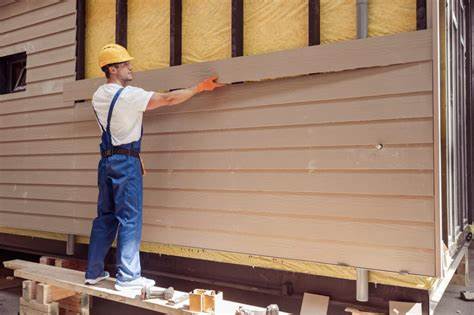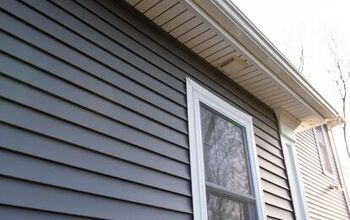When it comes to choosing the best siding for homes, there are numerous factors to consider. From durability to aesthetics, each material offers unique benefits that cater to different needs and preferences. Let's delve into the world of siding options and discover which one suits your home best.

Exploring the pros and cons of vinyl, wood, fiber cement, and metal siding will provide valuable insights into making an informed decision for your home.
Types of Siding Materials
When it comes to choosing siding for your home, there are various materials to consider. Each type of siding material comes with its own set of benefits and drawbacks, so it's essential to understand the differences before making a decision.
Vinyl Siding
Vinyl siding is a popular choice for homeowners due to its affordability and low maintenance requirements. It is durable, resistant to harsh weather conditions, and comes in a wide range of colors and textures. However, it may not offer the same level of insulation as other materials, and it can fade over time.
Wood Siding
Wood siding provides a classic, natural look that many homeowners find appealing. It is environmentally friendly and can be easily painted or stained to match your desired aesthetic. However, wood siding requires more maintenance than other materials, as it is susceptible to rot, pests, and moisture damage.
Fiber Cement Siding
Fiber cement siding is a versatile option that offers the look of wood without the maintenance requirements. It is durable, fire-resistant, and insect-proof. Fiber cement siding is available in a variety of styles and can mimic the appearance of wood, stucco, or stone.
However, it can be more expensive than other materials.
Metal Siding
Metal siding is known for its durability and longevity. It is resistant to fire, rot, and pests, making it a low-maintenance option for homeowners. Metal siding is available in a variety of finishes, including steel, aluminum, and copper. However, metal siding can dent or scratch easily, and it may not provide the same level of insulation as other materials.
Considerations for Choosing Siding
When selecting the right siding for your home, there are several important factors to consider. These factors can greatly influence the overall look, durability, and maintenance of your home's exterior. Factors like climate, budget, maintenance requirements, and style preferences all play a crucial role in determining the best siding option for your specific needs.
Performance in Varying Weather Conditions
Different types of siding materials perform differently in varying weather conditions. For example, vinyl siding is known for its durability and ability to withstand harsh weather conditions such as extreme heat, cold, and moisture. On the other hand, wood siding may require more maintenance and is susceptible to rot and insect damage if not properly maintained.
Understanding how each siding material reacts to different weather conditions can help you make an informed decision based on your local climate.
Eco-Friendliness of Siding Materials
When it comes to eco-friendliness, some siding materials are more sustainable than others. For instance, fiber cement siding is made from a combination of cement, sand, and cellulose fibers, making it a more environmentally friendly option compared to vinyl or aluminum siding.
Additionally, wood siding sourced from responsibly managed forests can also be a sustainable choice. Considering the environmental impact of the siding material you choose can help reduce your carbon footprint and contribute to a greener home.
Installation Process
When it comes to installing siding on a home, there are several general steps involved in the process. From preparation to finishing touches, each step is crucial to ensure a successful installation. Let's take a closer look at the installation process, the tools required, and the differences between DIY installation and hiring a professional
.
General Steps in Siding Installation
- Preparation: This involves cleaning the exterior walls, removing any existing siding, and ensuring the surface is smooth and free of debris.
- Waterproofing: Installing a weather-resistant barrier to protect the home from moisture and water damage.
- Installing the Siding: This includes measuring, cutting, and attaching the siding panels according to the manufacturer's instructions.
- Finishing Touches: Adding trim, caulk, and paint to complete the look and ensure a seamless finish.
Tools Required for Siding Installation
- Hammer
- Nails or screws
- Tape measure
- Level
- Saw (for cutting siding)
- Caulk gun
- Siding removal tool (if replacing existing siding)
DIY vs. Professional Installation
While some homeowners may choose to tackle siding installation as a DIY project to save costs, hiring a professional has its advantages. Professionals have the experience, tools, and skills to ensure a quality installation that will stand the test of time.
DIY installation may be suitable for those with experience in home improvement projects, but mistakes can be costly to fix. Consider your skill level, time, and budget before deciding whether to install siding yourself or hire a professional.
Maintenance and Longevity
Proper maintenance is crucial for ensuring the longevity of your home's siding. Different siding materials have varying maintenance requirements that can impact their lifespan. Here are some tips on extending the longevity of your siding and how to identify signs that it may need repair or replacement.
Maintenance Requirements for Different Siding Materials
- Vinyl Siding: Vinyl siding is relatively low maintenance, requiring occasional cleaning with a mild detergent and water to remove dirt and grime. Inspect for any cracks or damage that may need repair.
- Wood Siding: Wood siding needs regular painting or staining to protect it from moisture and rot. It should also be inspected for signs of water damage, mold, or insect infestations.
- Fiber Cement Siding: Fiber cement siding is durable but may require repainting every 5-10 years. Check for any cracks or chips in the paint that may need touch-ups.
- Aluminum Siding: Aluminum siding can be easily dented, so avoid impact from objects like ladders or sports equipment. Regular cleaning with a mild detergent and water is recommended.
Tips for Extending Siding Lifespan
- Regularly clean your siding to prevent dirt and grime buildup.
- Trim trees and bushes near your home to prevent damage from branches rubbing against the siding.
- Inspect your siding annually for any signs of damage or wear and tear.
- Repair any small issues promptly to prevent them from becoming larger problems.
- Consider applying a protective sealant or coating to enhance the durability of your siding.
Identifying Signs for Repair or Replacement
- Cracks, chips, or peeling paint on the siding.
- Warped or buckling siding panels.
- Mold or mildew growth on the siding surface.
- Rust spots on metal siding.
- Insect damage or nesting in the siding material.
Ending Remarks
In conclusion, selecting the right siding for your home is crucial for both functionality and curb appeal. By understanding the various materials, installation processes, and maintenance requirements, you can ensure that your home remains beautiful and protected for years to come.
FAQ Compilation
What is the most durable siding material?
Vinyl siding is known for its durability and low maintenance, making it a popular choice among homeowners.
How can I improve the longevity of my siding?
Regular cleaning and inspections can help prolong the lifespan of your siding. Additionally, addressing any repairs promptly can prevent further damage.
Is metal siding eco-friendly?
Metal siding is recyclable and can be an environmentally friendly option for homes seeking sustainable materials.
 Exploring the pros and cons of vinyl, wood, fiber cement, and metal siding will provide valuable insights into making an informed decision for your home.
Exploring the pros and cons of vinyl, wood, fiber cement, and metal siding will provide valuable insights into making an informed decision for your home.











